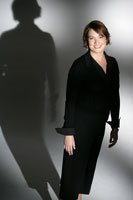
A new partner that I am working with to create integrated home theater, lighting and security systems for clients who want to enjoy ultimate convenience and cutting edge technology in their homes, Digital Home Lifestyles, is helping them to save money and energy as well. That may seem unlikely - after all adding more electronics to your home must add to the electricity required, right?
The difference is being made in the amount of energy needed to illuminate the home - something every home requires. The amazing thing is that it works with all the standard lights and bulbs you already know and use. The savings comes from the lighting control system and how it works. In addition to providing ease of pre-set lighting scenes for specific activities and time of day, a lighting control system like the one used by Digital Home Lifestyles can be programmed to limit the level of light. As explained by Chad Hollander, design consultant of Digital Home Lifestyles, by setting all fixtures to only come on at 80% of maximum, you are also using only 80% of the electricity needed to power that fixture, but there is no visible difference to your eye in the amount of light. Limiting the maximum wattage output of bulbs also extends the life of the bulb, resulting in lower replacement costs.
United under a single control system, independent "subsystems" can also monitor and conserve energy throughout the house with a simple touch of a screen, or programmed to suit your lifestyle. From the touch of a button you can open or close window shades according to the sun, adjust thermostats and be alerted to doors or windows that have been left ajar. It can be operated remotely from any computer anywhere in the world. You can even answer the front door while you are in another part of the country via the monitors in your security system and the Internet, instructing UPS to leave the package you were expecting.
Several control system products including lighting systems, thermostats, and shade controls are designed to operate efficiently, replacing several products and drawing less power. Integration solutions offer significant energy savings by providing daylight harvesting and automating lights, drapes, thermostats and sprinklers/fountains based on daylight, time, motion, occupancy, temperature, humidity and other conditions. By integrating the disparate environmental systems, efficiencies are increased exponentially and may contribute toward LEED Certification. Many options are available to suit your needs.

To truly experience the benefits of a home control system, the interface has to be easy to understand and simple to use. Infinitely customizable, the sky is the limit with how your home can be adapted to your lifestyle. The system can turn music on or off, preheat the pool or spa just in time for your arrival and can be set for individual preferences for each member of your family. When you arrive home, and enter your code to change security alarm settings, it can automatically turn on your favorite music or television channel and the lights for your path from garage to bedroom.
Digital Home Lifestyles is my choice for installing home theaters and entertainment systems that are unparalleled in Arizona. Their technology partners are the top of the line and systems can be designed specifically for you and your home - whether you have a dedicated theater space or want to conceal it within a living room, family room or outdoor area. They professionally design a media system according to your desires, and can present you with a budget in minutes, making changes in real time until you are satisfied with both the technology features and price. Then they work with your designer and builder to install it seamlessly into your home. As a designer, I appreciate that speakers and controls can be easily matched to be nearly invisible and integrate into your decor, no matter what the color or style.
For more information about integrating your home and lifestyle, anywhere in the world, contact Sesshu Design Associates or Digital Home Lifestyles directly.





































